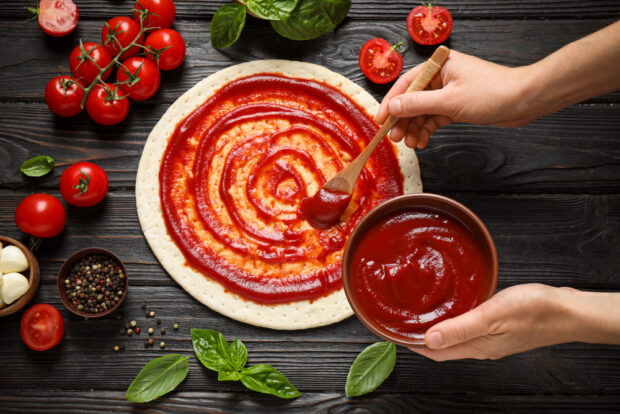Pizza is one of the most beloved foods worldwide, and while many focus on the dough or toppings, the true magic often lies in the pizza sauce. A well-crafted sauce brings out the flavors of the other ingredients and ties the entire dish together. Whether you prefer a classic tomato-based sauce, a creamy white alternative, or a bold pesto variation, the right pizza sauce can elevate an ordinary pie into an extraordinary experience. Understanding how to choose or make the best sauce is essential for any pizza enthusiast.
The Classic Tomato-Based Sauce
For most, pizza starts with a tomato-based sauce. This traditional option has been a staple for generations, providing a rich and tangy base for countless variations of pizza. The secret to a great tomato sauce lies in the quality of the tomatoes. San Marzano tomatoes, grown in the volcanic soil of Italy, are often considered the gold standard due to their natural sweetness and low acidity. However, other ripe, high-quality plum tomatoes can also create a delicious sauce.
Creating a homemade tomato sauce involves blending tomatoes with ingredients like garlic, olive oil, salt, and fresh basil. Some recipes call for slow-cooking the sauce to deepen the flavors, while others advocate for a no-cook method to retain the freshness of the ingredients. A balance between acidity and sweetness is crucial, and some chefs add a pinch of sugar to counteract excessive tartness. The consistency of the sauce also matters—too thick, and it overwhelms the dough; too thin, and it makes the pizza soggy.
Alternative Pizza Sauces
While tomato sauce is the classic choice, there are many other delicious alternatives that cater to different tastes and dietary preferences. One popular option is white sauce, often made with a creamy béchamel base or a garlic-infused Alfredo-style blend. This sauce pairs well with toppings like grilled chicken, mushrooms, and spinach, creating a rich and indulgent pizza experience.
Another fantastic alternative is pesto sauce, which combines fresh basil, garlic, pine nuts, Parmesan cheese, and olive oil. This vibrant green sauce adds a fresh and slightly nutty flavor that works particularly well with vegetables and lighter cheeses. For those who love a spicy kick, barbecue sauce can serve as a unique pizza base, bringing a smoky sweetness that complements toppings like grilled meats and onions.
For a completely different approach, olive oil and garlic-based sauces provide a minimalist yet flavorful foundation. This style, often referred to as a “white pizza” base, lets the flavors of the cheese and toppings shine without the presence of a traditional sauce. Drizzling high-quality olive oil infused with garlic and herbs can create a sophisticated and delicious alternative to tomato-based sauces.
Store-Bought vs. Homemade Sauce
When it comes to choosing the right pizza sauce, many people wonder whether to opt for store-bought varieties or make their own from scratch. While store-bought sauces offer convenience, they often contain preservatives, added sugars, and artificial ingredients that can impact the overall flavor and quality of the pizza. However, some high-quality brands focus on using simple, natural ingredients and can serve as a reliable option for those who want a quick and delicious sauce.
Making homemade pizza sauce allows for complete control over the ingredients and flavor profile. It also enables customization—whether adjusting the seasoning, incorporating fresh herbs, or modifying the texture to suit personal preferences. For those who enjoy experimenting in the kitchen, crafting a signature pizza sauce can be a rewarding experience that enhances every homemade pizza.
Pairing the Right Sauce with Toppings
Selecting the right pizza sauce is just as important as choosing the toppings, as the two should complement each other rather than compete. A classic tomato sauce works well with traditional toppings like pepperoni, mozzarella, and basil, creating a balanced and flavorful bite. For gourmet pizzas, such as those featuring prosciutto, arugula, or goat cheese, a milder tomato sauce with less acidity can allow the toppings to shine.
White sauces, such as Alfredo or béchamel, pair beautifully with creamy cheeses, roasted vegetables, and poultry, while pesto sauces bring out the best in fresh mozzarella, sun-dried tomatoes, and grilled shrimp. Barbecue sauce, on the other hand, is ideal for heartier pizzas with bold flavors, such as pulled pork, caramelized onions, and smoked gouda.
Conclusion
Experimenting with different sauce and topping combinations can lead to exciting and unexpected flavor profiles, allowing for a more personalized and enjoyable pizza experience. Whether sticking to tradition or venturing into creative new territory, getting the right pizza sauce is the key to making a truly memorable pizza.

